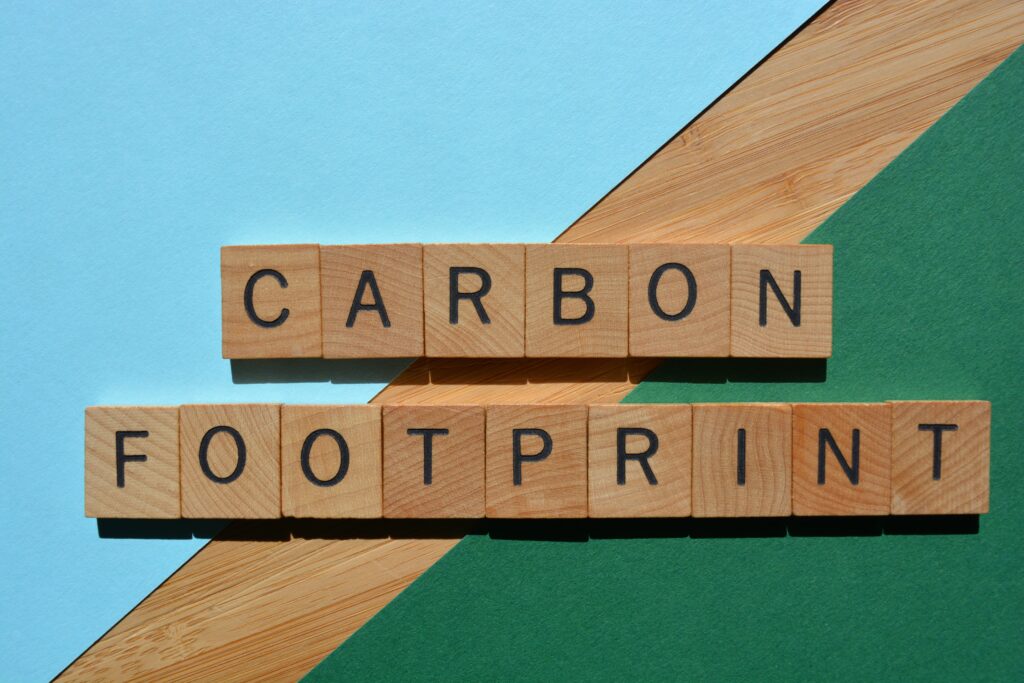Climate change is a pressing issue that requires urgent action from individuals and society as a whole. One of the ways to address this issue is by reducing our carbon footprint, which is the total amount of greenhouse gases emitted by human activities. According to the Intergovernmental Panel on Climate Change (IPCC), global carbon dioxide (CO2) emissions need to be reduced by 45% by 2030 and reach net-zero by 2050 to limit global warming to 1.5°C above pre-industrial levels.
Here are some startling statistics that highlight the urgency of the situation:
- The concentration of CO2 in the atmosphere is now higher than it has been in at least 800,000 years.
- The global average temperature has already increased by 1.1°C above pre-industrial levels, and we are already seeing the devastating effects of climate change.
- The top 20 countries account for around 80% of global CO2 emissions.
- In 2019, global CO2 emissions from energy use reached a record high of 33.1 gigatons (Gt).
- Transportation is the largest source of CO2 emissions in the US, accounting for 29% of total emissions.
Given these alarming statistics, reducing our carbon footprint is more important than ever. In this article, we’ll explore five ways to reduce your carbon footprint and help mitigate the effects of climate change.
1. Drive Less
Transportation is the largest source of carbon emissions in many countries, and it’s one of the most simple ways to reduce your carbon footprint. By using cleaner modes of transportation, such as public transit, biking, walking, or carpooling, you can reduce your daily emissions by an average of 4,000 fewer miles per year.
Getting in the habit of driving less can be easy. Make it a goal to replace at least one drive-alone trip each week with a different form of transportation.
For example, if you need to run the mall, grocery store, or doctor’s office, plan to do these all on the same day so that you don’t have to leave home for each of them individually. That way, you can save time and make your life a little more organized!
Also, limiting the amount of time you spend in your car will reduce the wear and tear on your vehicle. That can mean a longer lifespan and lower expenses for repairs in the long run.
A car that’s not in tip-top shape can be a major burden on your budget. Cleaning your car regularly can help keep it in good condition and reduce the amount of time you need to spend at the mechanic.
Another way to cut back on your carbon footprint is to buy a fuel-efficient car. You can find them at most auto dealerships, and they are often more affordable than traditional gasoline vehicles.
If you live in an area that doesn’t have many public options, consider driving a bike or walking to work. Both of these methods require no fuel and have the added benefit of exercise, which can help you stay healthy.
2. Go Green
Whether you want to save money, improve your health or reduce your environmental impact, going green can make a big difference. There are many ways you can go green, including reducing food waste, using eco-friendly products, and purchasing energy-efficient appliances.
A great way to start your journey to a more sustainable lifestyle is to set yourself or your company some goals. These can be as simple as changing your coffee mug to a reusable alternative, or sourcing recyclable packaging for all your products.
While these changes can be difficult, the results will be worth it in the long run. It can even help boost employee morale.
Another major benefit of a greener workplace is a healthier environment. This can be a huge factor in boosting employee well-being, from improved sleep and reduced respiratory illness to better mental health.
It is also a way to show your customers and employees that you care about the world around you. This can help to attract more business, as it demonstrates that you are taking the time and effort to ensure your business is as sustainable as possible.
Ultimately, green practices require careful balancing of three factors: profit, planet, and people. This means that businesses will have to be proactive and reactive when it comes to implementing green initiatives.
The next step to take is to look at all the players in your supply chain and see how they might be able to reduce their carbon footprint. This will give you a more comprehensive picture of how your business is making an impact on the world, and what you can do to change things.
By making these small changes, you can make a big difference in your carbon footprint and the world at large. It will also be a good way to inspire others to do the same.

Food waste is an often-overlooked, yet hugely important, part of the climate crisis. It not only takes up valuable space in landfills, but it also releases a significant amount of greenhouse gases. In addition, it uses up natural resources, such as soil, water, and energy, when food is discarded.
It’s easy to feel powerless when it comes to global warming, but you can help lower your carbon footprint by reducing food waste. It’s a practice that is easy to adopt and one that doesn’t take up a lot of time or money to implement.
To start, try to avoid buying more than you need – this can lead to an overly full fridge, which leads to food spoilage. Instead, make a list of items that you need and stick to it when shopping.
If you have the option, purchase foods in bulk rather than purchasing them individually – this can save you money and reduce the use of packaging materials such as plastic, paper, or metal. Moreover, buying in bulk can help reduce transportation costs, as fewer products will be shipped from the store to your home.
Additionally, choose slightly imperfect fruits and vegetables to reduce waste and preserve freshness. Many grocery stores offer to produce with slight blemishes at discounted prices to cut food waste.
Food loss and waste are serious problems, but it doesn’t have to be that way. With a few simple changes to your eating and grocery shopping habits, you can dramatically decrease the impact of your diet on our planet. Just remember that every little bit helps! Start using these tips today to lighten your carbon footprint and protect our precious planet.
4. Recycle
When you recycle, you are doing your part to help protect the environment. Recycling materials saves resources and energy, prevents pollution, strengthens the economy, and helps fight climate change.
It also helps preserve forests and biodiversity. For example, one ton of recycled office paper saves 17 trees and 463 gallons of oil.
Recycled products are often made from materials that would otherwise be dumped in landfills, such as paper, metal, plastic, and glass. These materials can be melted down and used to make new items.
This process uses far less energy than manufacturing them from scratch. It can save up to 95% of the energy needed for aluminum production, for instance, and about 70% for steel.
Moreover, recycling reduces the need for raw materials and can also cut down on pollution caused by mining and extracting new materials. This can also lower global greenhouse gas emissions and keep potentially methane-releasing waste out of landfills.
Another big benefit of recycling is that it creates jobs and provides for communities. In fact, according to the EPA, 681,000 Americans work in recycling-related industries.
These industries are important for providing jobs that pay living wages, health insurance, and other benefits. They also contribute to tax revenues and support the local economy.
Reducing your carbon footprint can seem like a daunting task, but it doesn’t have to be. If you’re willing to put in the effort, small changes can have a significant impact on your climate impact.
You can start by reducing your waste, donating unwanted items, and purchasing products that use post-consumer recycled content. This will also help you make the world a better place to live. If you want to do even more, encourage manufacturers to incorporate more recycled products into their products.

5. Offset
Carbon offsets are a great way to reduce your environmental footprint by funding projects that remove or avoid a certain amount of carbon emissions. These types of projects can include anything from planting trees to generating renewable energy.
To offset, you need to buy a certificate that represents one metric ton of CO2 or its equivalent greenhouse gas (CO2e). These certificates are then used to pay for projects that reduce emissions in other parts of the world.
This can help you lower your carbon footprint and move toward climate neutrality, but it’s important to note that you should offset in conjunction with a strategy to reduce your GHG emissions. Without the purchase of offsets, you’re not reducing your carbon emissions as much as you could.
Many people don’t understand what carbon offsets are, but they’re an important tool in reducing your carbon footprint and moving toward climate neutrality. You can use a calculator to determine how much carbon you release in a day and then purchase an offset certificate to offset that amount.
There are several different types of carbon offsets: voluntary, compliance, and market-based. Voluntary offsets are available through retail organizations that calculate your carbon footprint and then sell you a credit to offset it.
Compliance offsets are a market-based solution that helps businesses and governments meet their greenhouse gas emissions goals while maintaining financial viability. The market is regulated and has strict quality standards to ensure that the credits purchased are being used for a specific project, as opposed to being double-counted by multiple parties.
A market-based approach is a popular option for companies that want to be proactive about their climate impact and meet their greenhouse gas emissions goals while also meeting their bottom line. This can include companies with sustainability goals or those that want to hedge against future cap and trade regulations.
- About the Author
- Latest Posts
A passionate advocate for all natural and sustainable ideas. With a background in sustainable economics science and a deep love for nature, Sojy has dedicated his career to promoting eco-friendly practices and encouraging others to live a more sustainable lifestyle. He is an avid hiker, gardener, and cook, and loves experimenting with natural ingredients in his recipes and lifestyle routines. Sojy believes that small changes can make a big impact and is constantly seeking out new ways to reduce his carbon footprint and inspire others to do the same



